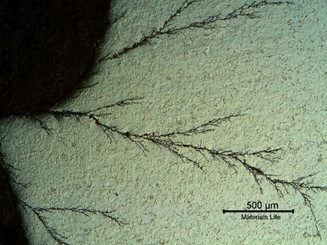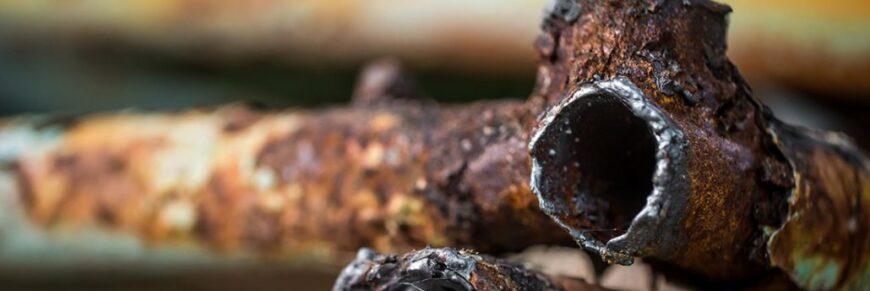Muhammad Hussain, Dr Tieling Zhang, University of Wollongong, Australia, Dr Shagufta Khan, Naveed Hassan, AMCO Integrity Pty Ltd Australia.
SUMMARY: With the growing gas industry, gas pipelines have been developed rapidly in terms of safety, economy, efficient and on time delivery. Most of the gas pipeline have seen their design life and its reliability is at risk due to metal degradation. Such degradation can occur for few reasons, for instance stress corrosion cracking (SCC). SCC normally initiates on the external surface and grows in both depth and surface directions on gas pipeline. Stress Corrosion Cracking is time-dependent phenomena where crack growth depends on few factors like stress, environment, process, stress intensity, strain rate, temperature, or materials of constriction. SCC can occur when certain conditions are reached. These conditions could be electrochemical, mechanical or metallurgical, that must exist to initiate the crack. Its very hard to detect SCC at first place.
This paper will discuss a detailed review of the SCC literature, its controlling factor, detection method and mitigation technique to maintain the integrity of gas pipeline.
Keywords: Pipeline Assessment, Stress Corrosion Cracking, Reliability, Integrity Management, Risk Analysis.
1. Introduction
Pipelines are one of the most important energy transportation arteries and it is assumed they will continue to be a secure tool for energy transmission for many more decades. Among the different pipeline systems, gas pipelines are most important and vital. Due to the requirements for higher safety and reliability, integrity management has become an important programme to manage risk and develop proper inspection planning.
In Australia’s first pipeline was commissioned in the late 1800s to transport water to the Coolgardie gold fields. There is more than 39,000 kilometres of natural gas transmission pipelines that efficiently transport gas under high pressure from where it is produced to the outskirts of cities both large and small. The first Australian pipeline was built in 1964 from Moonie to Brisbane and was 306 kilometres long. Later in March 1968, 440km long pipeline from Roma to Brisbane came into operation, which is Australia’s oldest natural gas pipeline.
Corrosion is the deterioration of a steel pipeline that results from an electrochemical reaction with its instant environments. Over time and if left unmitigated, corrosion can cause the steel to lose its strength and possibly render it unable to contain the gas or fluid in the pipeline at its operating parameters. Pipelines have critical infrastructure and long-serving asset, it is very crucial for pipeline owners and operators to maintain the integrity and reliability of these pipelines.
2. Stress Corrosion Cracking (SCC)
The term stress-corrosion cracking (SCC) is used to define any type of environmentally induced or assisted crack propagation. The crack propagation noticed due to combined and synergistic interactions of stress and corrosion. Moreover, soil movement–induced longitudinal stress and strain contribute to the initiation and propagation of stress corrosion cracks in pipelines.
A 24-inch gas pipeline in Louisiana on March 4, 1965 ruptured and killed 17 people. Investigation shows that pipeline was ruptured due to stress corrosion. Australia experienced its first stress corrosion cracking case in July 1982 near Moomba on a gas pipeline.
In stress corrosion, most of the surface usually remains intact, however, fine cracks appear in the microstructure, making the corrosion hard to detect. The cracks typically have a brittle appearance and form and spread in a direction perpendicular to the location of the stress. Selecting proper materials for a given environment (including temperature and management of external loads) can mitigate the potential for catastrophic failure due to SCC. There are 2 types of SCC of concern to the pipeline industry:
· High pH SCC
· Near-neutral pH SCC
From the literature it is observed that USA, Australia, Iran, Italy, Pakistan, Iraq and Saudi Arabia pipeline has seen high pH SCC. On the other hand, near or low pH SCC is known to have occurred in the northern part of the USA, in Canada and in Russia.
Most of the pipelines are buried, even if they are well maintained and protected, but due to environmental changes, external or third party damage, coating failure, inherent materials defects, soil movements etc as shown in Figure 1 – SCC Susceptibility Parameters.

Figure 1 – SCC Susceptibility Parameters
Stress corrosion cracking normally occurs at applied stresses below the yield strength at locations where there is otherwise minimal wall loss due to corrosion.


Familiarization with the life cycle of SCC is useful to understand and develop the assessment tool for SCC. An analysis of the life cycle shows differences in growth rate and mechanism, which helps to know SCC severity and time to determine suitable mitigation to avoid SCC failure. The SCC life cycle is often called a “bathtub model” as depicted in Figure 3 – Bathtub Model: Life Cycle of SCC Growth in Pipelines (Parkins, 1987).

Figure 3 – Bathtub Model: Life Cycle of SCC Growth in Pipelines (Parkins, 1987)
The “bathtub model” is having four (04) stages. In stage one is normally a stage where there is no SCC occurred to gas pipeline, but it depends on the conditions it was commissioned, for example coating issue. If there is any issue with pipeline coating, there is a chance that pipeline will have SCC sooner or later depends on the circumstances. risk on the risk to have SCC. In second stage, SCC may initiate due to residual stresses, manufacturing or construction issues, stress concentrations or a combination of these parameters. If pipeline is operating in harsh environment, this will help to propagate the crack quickly, which can be seen in stage 3 of the model. Finally, in last stage, large cracks coalesce, and failure occurs.

